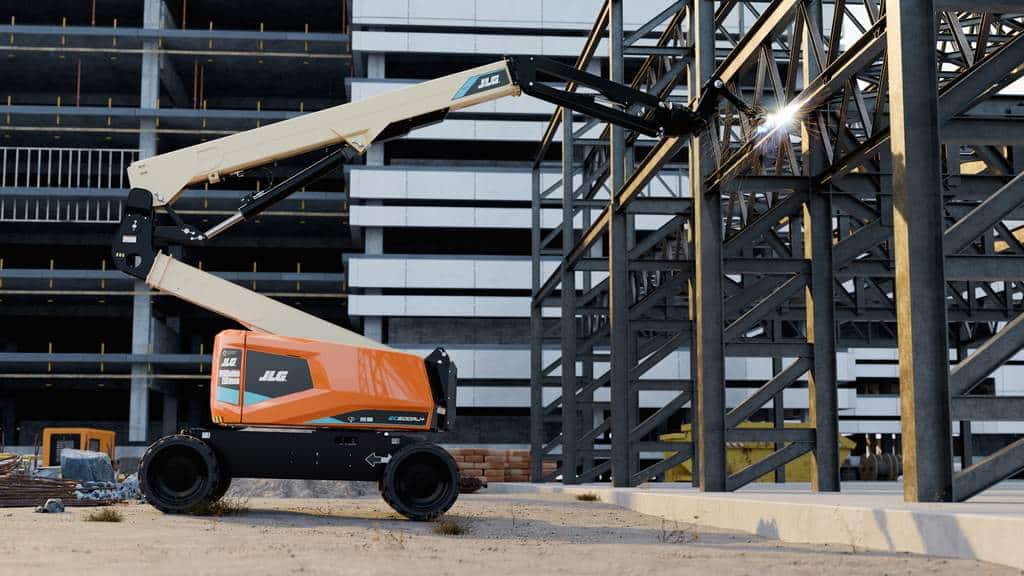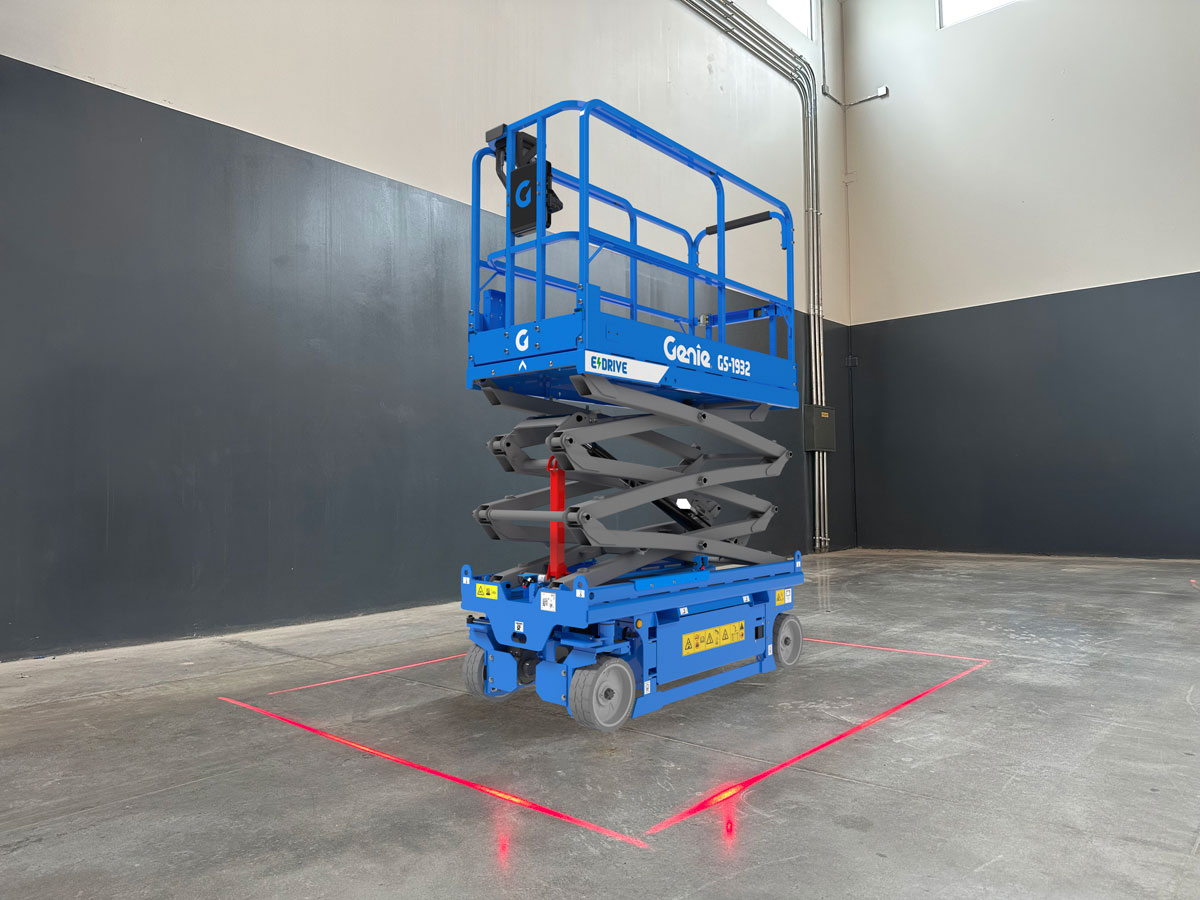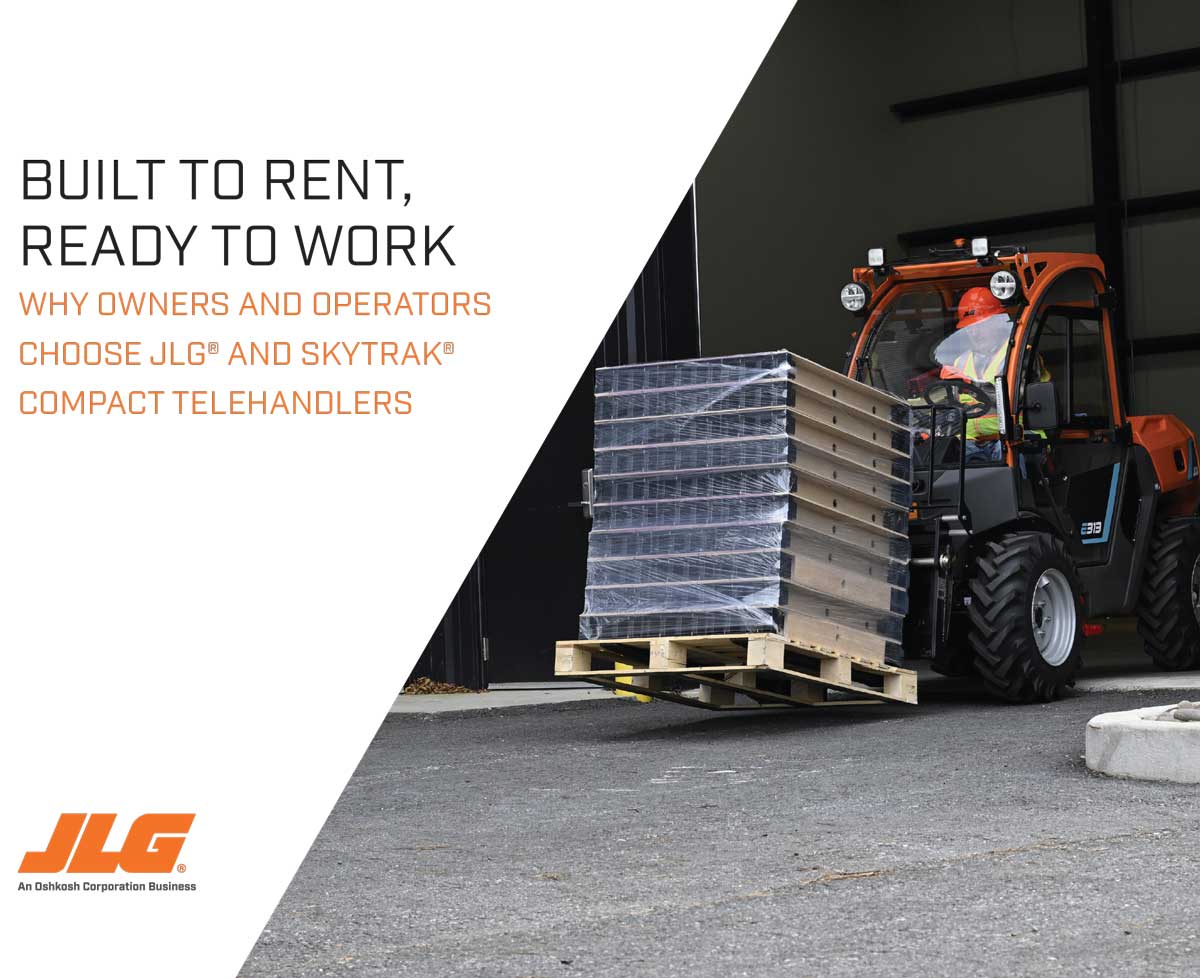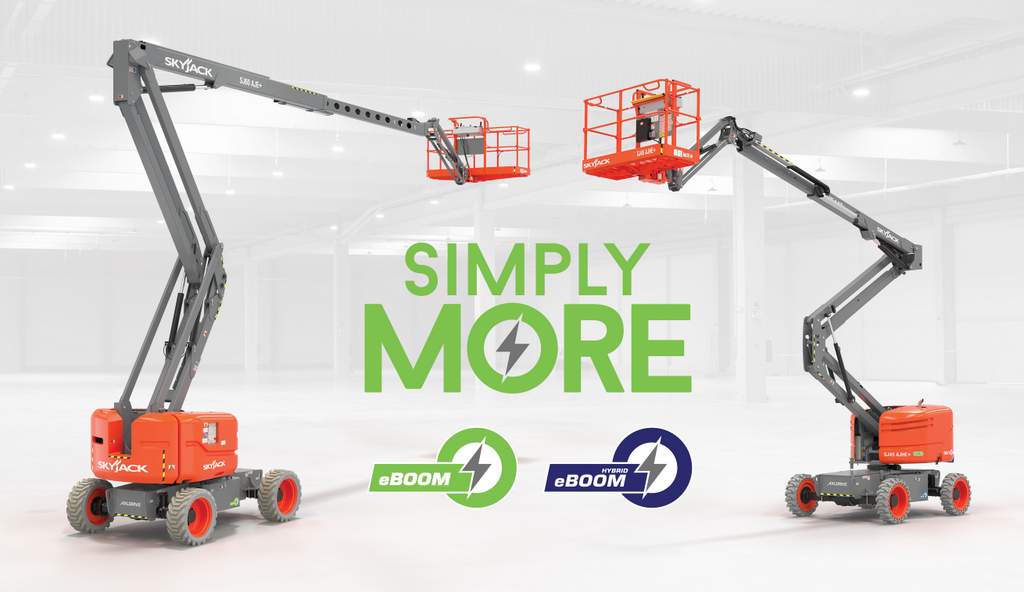Q&A: JCB’s Lee Tice Discusses the Compact Telehandler Market and the Company’s Product Line

Compact telehandlers are quickly becoming a tool-carrier of choice for contractors, landscapers, farmers and rental pros who want telescoping power in a smaller footprint. These machines bring the lift height, reach and attachment versatility of their larger cousins — but with more agility and comfort for navigating tight workspaces. To kick off a new Q&A series on compact telehandlers, we’re talking with Lee Tice, product manager at JCB.
JCB has been at the forefront of telehandler innovation for nearly 50 years, and that commitment continues as jobsite demands evolve. From pioneering the first telescopic handler to leading the charge in electric technology, JCB continues to set new standards in performance, efficiency and versatility.
Lee, thanks so much for taking the time to talk to us today. We’re big fans of the JCB brand and of its compact telehandler lineup. First off, maybe give us a brief history of your company in the telehandler market. Quickly summarize your product offerings for our readership.
JCB has been a pioneer in the telehandler market for more than 45 years. Since launching its first telescopic handler in 1977, the company has continually innovated, setting industry standards for performance, reliability and operator-focused design. With more than 270,000 units sold worldwide, JCB remains a leader in telehandler development by understanding how these machines are used across industries and adapting its designs for optimal comfort, dependability and efficiency.
Today, JCB offers more than 30 telehandler models, each tailored to specific jobsite demands. The lineup includes:
- Compact telehandlers – Designed for maneuverability in tight spaces, JCB’s compact telehandlers are ideal for urban construction, landscaping and agricultural applications. Despite their small footprint, these machines deliver impressive lift capacities and reach, making them versatile for a variety of tasks. JCB ensures maximum visibility and control with its Clearview cab design, while hydrostatic transmission provides smooth and precise operation in confined areas.
- Mid-range telehandlers – Built for versatility, JCB’s mid-range models strike the perfect balance between lift capacity, reach and efficiency. These telehandlers are widely used in general construction and material handling, where adaptability is key. Features such as automatic engine idle and stop help reduce fuel consumption, while the intuitive control layout ensures ease of operation. With JCB’s extensive attachment compatibility, these machines can quickly switch between tasks, from loading materials to lifting personnel.
- High-capacity telehandlers – For large-scale applications that demand exceptional lifting power, JCB’s high-capacity telehandlers offer industry-leading strength and stability. These machines are engineered to handle heavy loads with confidence, making them indispensable for industrial applications, large-scale construction and infrastructure projects. Advanced hydraulic systems ensure smooth lifting and precise load placement, while extra-large stabilizers provide maximum safety and stability on demanding jobsites.
- Rotating telehandlers – JCB’s latest innovation, rotating telehandlers like the 512-83R, provide 360-degree versatility by combining the reach of a crane, the agility of a telehandler and the functionality of an aerial work platform. These machines are designed for efficiency, featuring automate technology for rapid outrigger deployment and RFID attachment recognition for seamless tool changes. The 512-83R’s high-visibility cab, intuitive load management system and remote-control capabilities give operators unmatched control, making it an essential machine for complex lifts and multifunctional jobsites.
JCB telehandlers are engineered with a deep understanding of the industries they serve. From the durability of high-strength steel construction to fuel-efficient powertrains that lower operating costs, every JCB telehandler is built to maximize productivity. Advanced features like LiveLink telematics provide real-time machine monitoring, helping fleet managers optimize performance and minimize downtime.
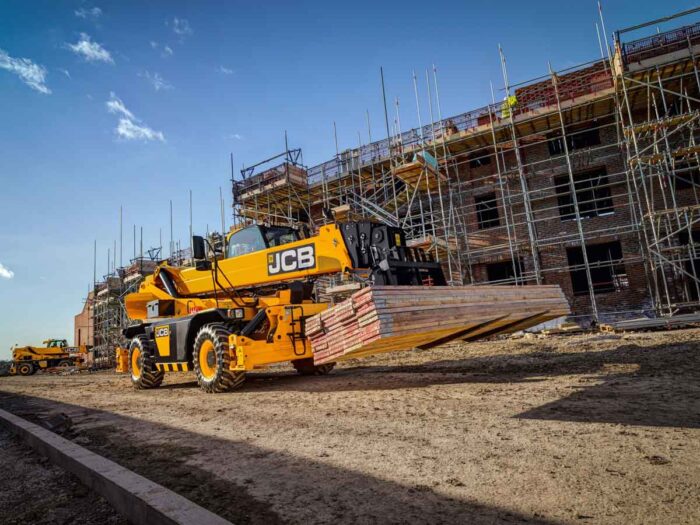
By staying ahead of industry demands and continuously improving machine capabilities, JCB remains committed to delivering telehandlers that enhance efficiency, safety and operator comfort across construction, agriculture and material handling applications.
Summarize your smallest compact telehandler units offered today. How many units do you offer? Share major features, specs, technologies and options. How high do your units lift and what is their capacity?
JCB’s compact telehandlers are built for tight spaces, tough jobs and the kind of versatility operators need on modern jobsites. Among the most compact in the lineup, the 505-20E and 505-20TC deliver the lift capacity and maneuverability expected from a JCB telehandler but in a smaller package.
The 505-20E is JCB’s first fully electric compact telehandler, part of the E-TECH range designed for zero emissions at the point of use. It’s ideal for indoor applications, urban construction and any jobsite where noise and emissions need to be kept to a minimum. Even though it runs on a 24-kilowatt-hour lithium-ion battery, there’s no compromise on performance. This machine lifts up to 5,500 lbs and reaches 20 ft high, all while maintaining the same cycle times and hydraulic performance as its diesel counterpart. With a full workday’s runtime on a single charge, depending on the application, operators get the efficiency they need without the hassle of fuel.
For those who need a traditional diesel-powered machine, the 505-20TC is a compact telehandler that packs a punch. With a 74-hp JCB Diesel by Kohler engine, it delivers plenty of torque at low rpm, ensuring strong performance while keeping fuel consumption low. Like its electric sibling, it has a 5,500-lb lift capacity and a 20-ft maximum lift height, making it a great fit for a range of industries, from general construction to agriculture and material handling. Its four-wheel-drive system provides excellent traction, and for those working on slippery or uneven surfaces, an optional limited-slip differential adds even more control.
Both models also offer impressive ground-engaging capabilities, allowing operators to do more than just lift and place materials. With the right attachments, these compact telehandlers can handle tasks like grading, backfilling and light excavation, making them a true multipurpose solution on the jobsite. Their hydraulic flow ensures strong breakout force when using buckets or grapples, while the compact design allows operators to maneuver in tight spaces without sacrificing power. Whether moving loose materials, loading trucks or maintaining rough terrain, these telehandlers provide the stability and strength needed for ground-engaging applications.
JCB designed these machines with the operator in mind, featuring the Clearview cab for excellent visibility, ergonomic controls for all-day comfort and intuitive operation that allows crews to get to work quickly. Whether it’s the zero-emission efficiency of the 505-20E or the proven power of the 505-20TC, JCB’s compact telehandlers offer reliable solutions for operators who need performance, versatility and maneuverability in one machine.
What are your major product differentiators? What makes your small telehandlers unique?
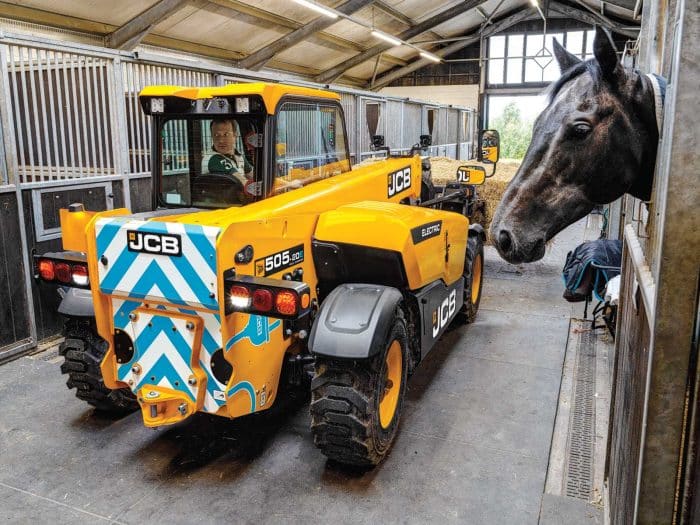
JCB’s compact telehandlers stand out because they’re built for more than just lifting – they’re designed as true multipurpose machines, offering superior versatility, safety and operator comfort compared to the competition. While many telehandlers are limited to pick-and-place applications, JCB models go further with ground-engaging capabilities, allowing operators to handle grading, backfilling and light excavation with the right attachments. High-flow auxiliary hydraulics and strong breakout forces give them the power of a skid steer or compact wheel loader, making them an all-in-one jobsite solution.
Visibility and safety are major differentiators. JCB’s Clearview cab is engineered for maximum sightlines, with a low-profile boom that reduces blind spots and improves maneuverability in tight spaces. An advanced load management system provides real-time data to ensure stability, reducing the risk of tipping. Combined with excellent traction and stability features, these machines give operators the confidence to work efficiently in challenging conditions.
Operator comfort is another area where JCB leads. The cab is designed for long shifts, featuring ergonomic controls, air suspension seating and single-lever electro servo operation for precision and ease of use. Intuitive technology reduces operator fatigue and allows for quicker, more efficient work.
JCB also sets itself apart with its investment in alternative power solutions. While competitors are still developing their electric offerings, JCB already delivers zero-emission, low-noise telehandlers that maintain the same lift performance as their diesel counterparts. This makes them ideal for indoor work, urban construction and environmentally sensitive areas.
Durability and reliability are at the core of JCB’s engineering. Unlike many manufacturers that outsource key components, JCB produces over 85 percent of its parts in-house, ensuring consistent quality and long-term performance. High-strength steel booms, reinforced chassis designs and industry-leading manufacturing processes make JCB telehandlers built to last.
Where do these super small telehandlers end up working? What type of applications are popular for compact or subcompact telehandlers?
Compact and subcompact telehandlers are becoming essential across a range of industries, thanks to their versatility, maneuverability and ability to handle more than just lifting.
Urban construction sites rely on them for moving materials in tight spaces where larger equipment can’t go, from narrow alleys to multi-story projects. Landscapers use them to transport pallets of pavers, load mulch and place heavy materials with precision. On farms, nurseries and equestrian facilities, they provide the reach and lift needed for stacking hay, handling feed and managing supplies in barns and storage areas.
Industrial yards and warehouses are also adopting compact telehandlers as more capable alternatives to forklifts, offering better lift height, rough terrain capability and outdoor versatility. Even rental companies are seeing rising demand, as more contractors recognize how these machines replace multiple pieces of equipment in certain applications.
Farming is big in Europe for small telehandlers. Is that a growing application in America?
Compact telehandlers have long been a staple on European farms, and their popularity is steadily growing in the American agricultural sector. Farmers and ranchers are recognizing the versatility and efficiency these machines bring to daily operations, making them an increasingly valuable tool for handling everything from feed and hay to heavy materials around the farm.
JCB’s Agri models are specifically engineered to meet the unique demands of agriculture, setting them apart from construction-focused telehandlers. Take the 525-60 Agri model, for example. Its compact dimensions allow it to navigate easily through tight barn aisles and narrow farm pathways, making it ideal for tasks like feeding livestock or stacking bales in confined spaces. The low boom profile enhances all-around visibility, which is crucial for safety when operating around animals and farm workers.
The 525-60 Agri is equipped with a powerful engine that delivers high torque at low RPMs, providing the necessary force for tasks such as loading manure or hauling feed. Its robust hydraulic system ensures smooth and precise control, whether handling delicate materials or heavy loads. Additionally, JCB’s Smoothride System (SRS) helps cushion the load to prevent spillage and reduce stress on both the machine and operator during transport.
Another key feature for agricultural applications is the automatic reversing fan. Working in barns, feedlots or dusty environments can quickly clog radiators and reduce engine efficiency. The reversing fan helps keep the cooling system clear by automatically expelling debris, reducing maintenance needs and ensuring consistent performance in tough conditions.
Operator comfort is another area where JCB’s Agri models excel. The spacious cab is designed with ergonomics in mind, featuring intuitive controls and excellent ventilation to keep operators comfortable during long hours in the field. Optional air conditioning and advanced seat configurations further enhance the working environment, leading to increased productivity.
As American agriculture continues to evolve, compact telehandlers like JCB’s Agri models are becoming more popular. Their ability to perform a wide range of tasks – from material handling to ground engagement – makes them invaluable assets on farms and ranches across the country, giving operators a smarter, more efficient way to get work done.
Small telehandlers are attachment-takers or tool carriers. Tell us about the attachment capabilities of your units. What is the auxiliary flow to attachments? What type of attachment systems are available?
JCB’s compact telehandlers are designed as true tool carriers, offering unmatched versatility across a wide range of applications. With high-flow auxiliary hydraulics – typically ranging from 18 to 32 gallons per minute – these machines provide ample power for hydraulic attachments, making them capable of far more than just lifting and placing materials.
To maximize efficiency, JCB telehandlers feature multiple coupling options. The JCB Q-Fit system allows for rapid attachment swaps, while universal skid steer couplers ensure compatibility with industry-standard tools. Many models also come equipped with hydraulic quick couplers, enabling operators to change attachments without leaving the cab, reducing downtime and improving productivity.
Where JCB telehandlers really excel is in their ability to take on ground-engaging tasks – something not all telehandlers are built for. With robust hydraulic power, strong breakout force and precise control, these machines can handle tasks like grading, backfilling and site preparation just as easily as they move and lift materials. This makes them ideal for operators who need one machine to take on multiple roles, reducing the need for additional equipment and increasing jobsite efficiency.
With advanced attachment recognition, intuitive controls and the ability to adapt to virtually any job, JCB telehandlers are built to do more. Whether on a construction site, farm or industrial facility, their combination of lift power and ground-engaging capability makes them one of the most versatile machines available today.
How much does a compact telehandler cost (generally) vs. a full-size compact telehandler?
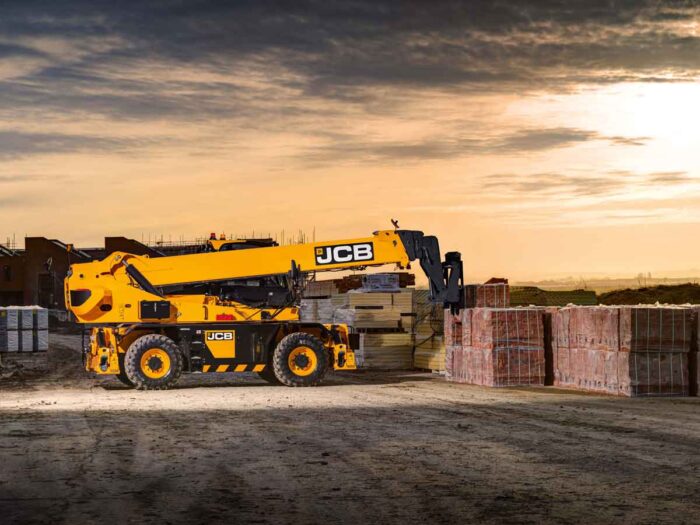
The cost of a compact telehandler varies depending on the model, features and attachments, but in general, compact telehandlers are more affordable than full-size models while still delivering strong lifting power and versatility. While price is an important factor, the real focus should be on choosing the right machine for your specific needs.
Compact telehandlers are ideal for operators who need lift capacity and reach in tight spaces, whether on urban construction sites, farms or industrial yards. They offer lower operating costs, better maneuverability and the ability to handle multiple tasks with quick attachment changes. If you’re working in confined areas but still need strong lifting power, a compact telehandler can often replace larger equipment without sacrificing performance.
Full-size telehandlers, on the other hand, provide greater lift heights and capacities, making them better suited for large-scale projects, heavy-duty material handling and high-reach applications. If your job requires lifting extremely heavy loads or working at extended heights, the investment in a larger model may be the best long-term decision.
Choosing the right machine comes down to how you plan to use it. A compact telehandler might cost less upfront, but if you need more lift height or capacity down the line, upgrading later can be more expensive than selecting the right model from the start. JCB’s range of telehandlers ensures that whether you need a compact, maneuverable machine or a heavy-duty workhorse, there’s an option designed to fit your operation.
What operation tips can you share when using super small compact telehandlers?
Operating a compact telehandler efficiently comes down to proper technique, awareness of the machine’s capabilities and making the most of its versatility. Whether working on a construction site, a farm or in an industrial yard, a few key practices can help operators maximize productivity while maintaining safety.
One of the most important things to remember is that compact telehandlers, while smaller in size, still require the same careful load management as larger machines. Always check the load capacity chart for the attachment being used and be mindful of the telehandler’s center of gravity, especially when extending the boom or working on uneven terrain. JCB’s load management system provides real-time stability data to help operators stay within safe operating limits.
Maneuverability is one of the biggest advantages of a compact telehandler, but that doesn’t mean operators should rush through tight spaces. Taking advantage of the machine’s excellent visibility – especially with JCB’s Clearview cab design – helps ensure safe operation. When working indoors or in confined areas, plan movements in advance to avoid unnecessary repositioning and improve efficiency.
Making the most of attachments is another key to maximizing a compact telehandler’s value. Unlike traditional forklifts or skid steers, these machines are designed to handle multiple tasks. Swapping between forks, buckets, augers and grapples allows operators to do more with a single machine, reducing downtime and improving overall productivity. JCB’s hydraulic quick couplers and RFID attachment recognition make changing attachments fast and easy, helping operators switch between jobs without slowing down.
Ground conditions also play a major role in telehandler performance. Compact models are designed to handle rough terrain, but operators should still be mindful of stability on slopes, loose surfaces and muddy jobsites. Engaging four-wheel drive and using the proper tires for the environment helps maintain traction and control.
Finally, regular maintenance is key to keeping a compact telehandler running at peak performance. Checking hydraulic connections, monitoring tire pressure and using features like JCB’s automatic reversing fan to keep the cooling system clear in dusty environments all contribute to a more reliable machine.
Do you offer electric or battery-powered units? Give us all the details.
JCB offers a fully electric compact telehandler, the 505-20E, as part of its E-TECH range. This machine provides zero emissions at the point of use, making it an ideal choice for indoor applications, urban jobsites and environmentally sensitive areas. Unlike traditional diesel-powered models, the 505-20E operates quietly, reducing noise pollution and making it a good fit for night work or noise-restricted zones.
Powered by a 96-volt, 24-kilowatt-hour lithium-ion battery, the 505-20E delivers the same performance as its diesel counterpart without sacrificing lift capacity or cycle times. It can run a full workday on a single charge, depending on the application, and features an onboard charger for convenient recharging. For faster turnaround, JCB offers a universal fast charger that can fully recharge the battery in about one hour and 50 minutes when connected to a 480-volt power source.
Beyond its clean energy benefits, the 505-20E is designed for efficiency and ease of use. It features JCB’s Clearview cab for improved visibility, three steering modes for maximum maneuverability, and a low-maintenance design with fewer daily checks and service intervals. The machine retains JCB’s commitment to versatility with industry-standard attachment couplings, high-flow auxiliary hydraulics and RFID attachment recognition.
What other new technologies are evolving in the compact telehandler market today?
JCB continues to lead the compact telehandler market with cutting-edge technology designed to improve efficiency, safety and versatility. From electrification to telematics, JCB is pushing innovation to help operators get more out of their machines.
JCB’s commitment to sustainability is evident with the introduction of the fully electric 505-20E telehandler. Part of the E-TECH range, this machine delivers zero emissions at the point of use while maintaining the same performance as its diesel counterpart. With a 96-volt lithium-ion battery and fast-charging capability, the 505-20E provides a practical, high-performance alternative for indoor and urban jobsites where emissions and noise restrictions are a concern.
JCB’s Clearview Quickhitch with RFID attachment recognition is another major innovation, automatically detecting attachments and adjusting load charts accordingly. This technology streamlines operations by ensuring the machine is always working within safe load parameters, reducing setup time and improving efficiency.
JCB LiveLink telematics is also transforming fleet management by providing real-time insights into machine performance, location, battery or fuel levels, and maintenance schedules. This system allows operators and fleet managers to track equipment remotely, helping to optimize productivity, reduce downtime and improve overall jobsite efficiency. LiveLink also provides security benefits by monitoring machine usage and enabling geofencing for theft prevention.
What advice would you give a contractor looking to buy or rent a super small telehandler? Everyone knows that understanding your application will drive your buy or rent, so give advice on a subject people don’t often think about.
When buying or renting a compact telehandler, contractors often focus on lift capacity, reach and overall size. But one key factor that’s frequently overlooked is how easily the machine can be transported between jobsites.
Transportability can make a big difference in overall efficiency and cost. Unlike full-size telehandlers that require a commercial truck and lowboy trailer for transport, many compact models are light enough to be towed on a heavy-duty trailer with a pickup truck. This flexibility allows smaller crews to move equipment without relying on specialized transport, saving time and reducing logistical headaches.
Before selecting a compact telehandler, it’s important to check the weight, dimensions and tie-down points to ensure it fits your existing trailers and meets local transport regulations. Some machines may seem compact but exceed weight limits for standard trailers, requiring additional permits or transport considerations. Ground clearance and loading angles also matter – some telehandlers are easier to load onto trailers than others, especially if ramps are steep or uneven.
If you’re renting, ask about transport logistics in advance. Some rental yards offer delivery, while others expect customers to handle transport themselves. Knowing whether a machine can be easily moved between projects or needs dedicated hauling can help avoid unexpected downtime and costs.
A compact telehandler’s ability to get to and from the jobsite quickly and efficiently is just as important as its performance on the ground. Choosing a machine that fits your transport setup can save time, money and hassle in the long run.
What trends do you see in the compact telehandler market overall? Are buyers gravitating toward certain sizes or technologies? What interesting evolutions do you see in the market and the near future?

The compact telehandler market is evolving as more buyers look for machines that offer greater versatility, transportability and efficiency. Contractors, farmers and material handling operators are increasingly recognizing that compact telehandlers can do more than just lift – they are becoming essential multiuse machines that can replace forklifts, skid steers and small wheel loaders in many applications.
One key trend is the growing demand for smaller, more maneuverable models. Buyers are looking for telehandlers with lower operating weights and compact footprints that can navigate tight spaces, whether in urban construction, agriculture or industrial settings. This shift is especially noticeable in areas where space constraints and jobsite access are challenges. The ability to easily transport a telehandler between sites is also a major factor influencing purchasing decisions.
Electrification is another major evolution in the market. As emissions regulations tighten and more jobsites require low- or zero-emission equipment, the demand for electric compact telehandlers is rising. Buyers want machines that maintain the same lifting performance as their diesel counterparts but offer quieter operation and lower operating costs. While electric adoption is still in its early stages, advancements in battery technology and charging infrastructure are making these machines a more viable option for a wider range of applications.
Telematics and smart machine technology are also becoming standard expectations. Buyers want equipment that provides real-time data on machine location, usage and maintenance needs. JCB’s LiveLink telematics system, for example, helps operators and fleet managers track performance, optimize efficiency and prevent unplanned downtime. The ability to monitor equipment remotely is particularly valuable for rental fleets and large contractors managing multiple jobsites.
Regional demand is also shifting. Urban areas are seeing increased adoption of compact telehandlers as more projects require equipment that can operate in confined spaces with minimal disruption. Agriculture is another fast-growing market, as farmers and ranchers recognize that compact telehandlers provide greater reach and lifting power than skid steers while offering attachment versatility for handling feed, hay and materials.
Great info. We really appreciate it, Lee. For those looking to learn more, head over to jcb.com.
Keith Gribbins is publisher of Compact Equipment.

